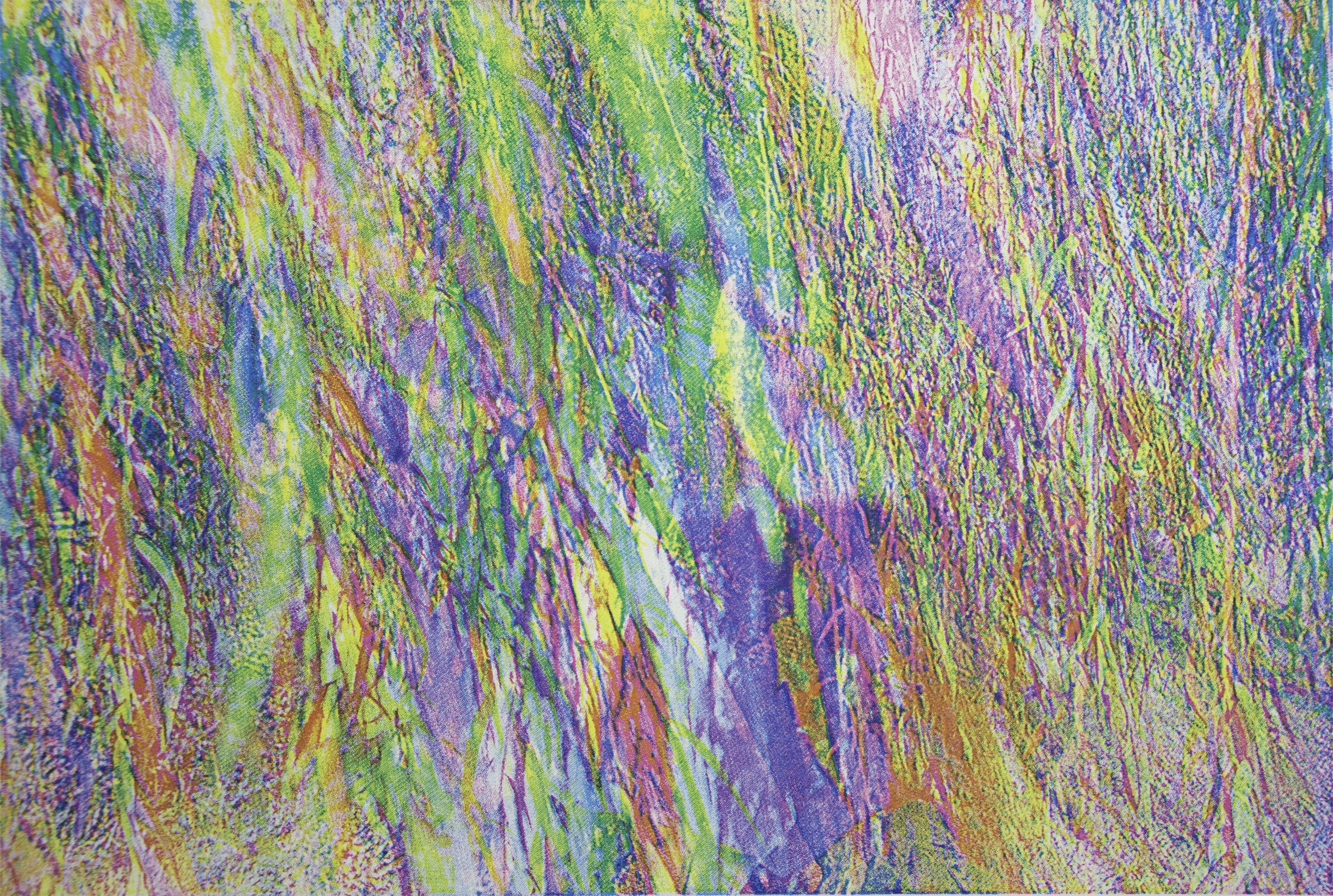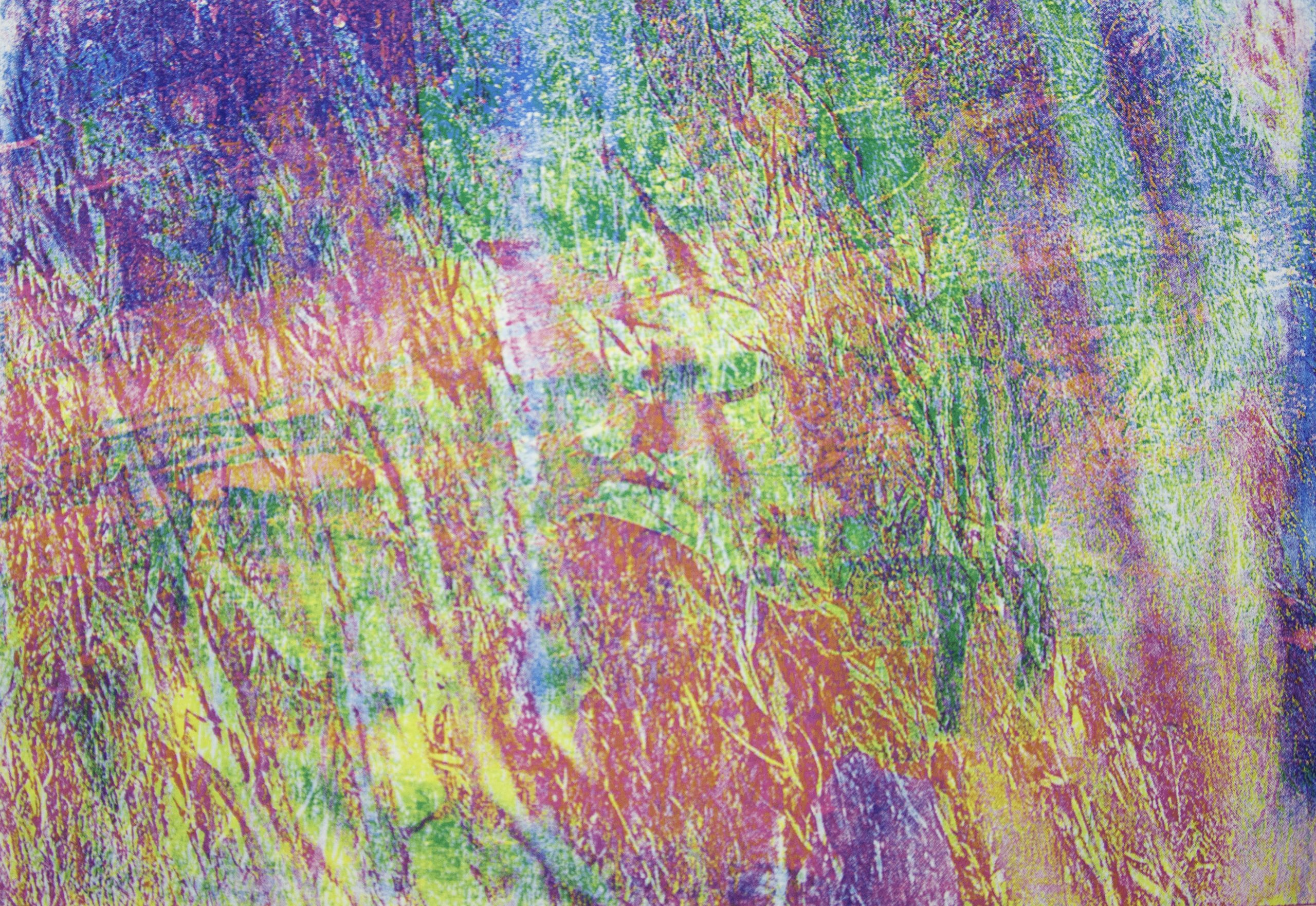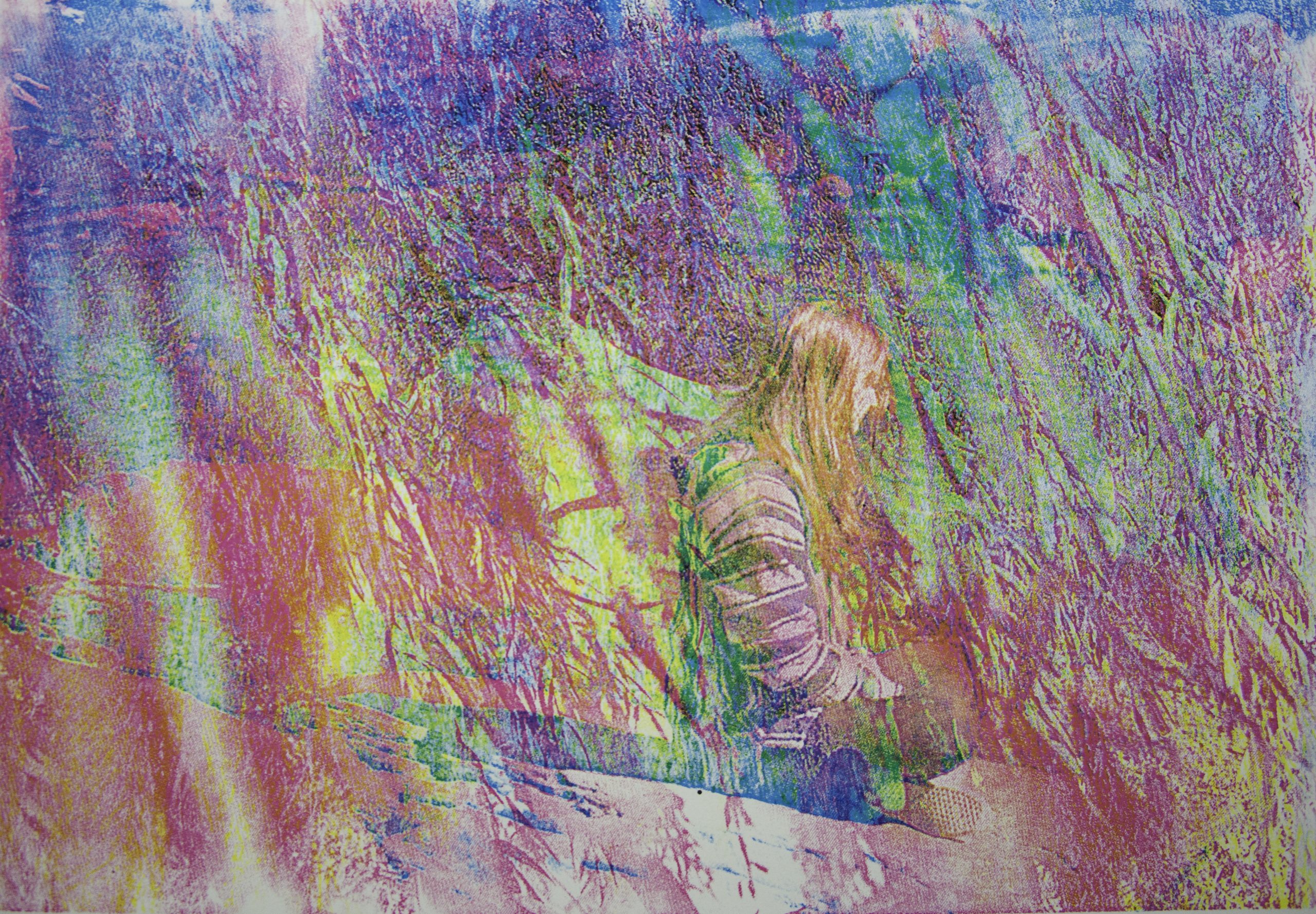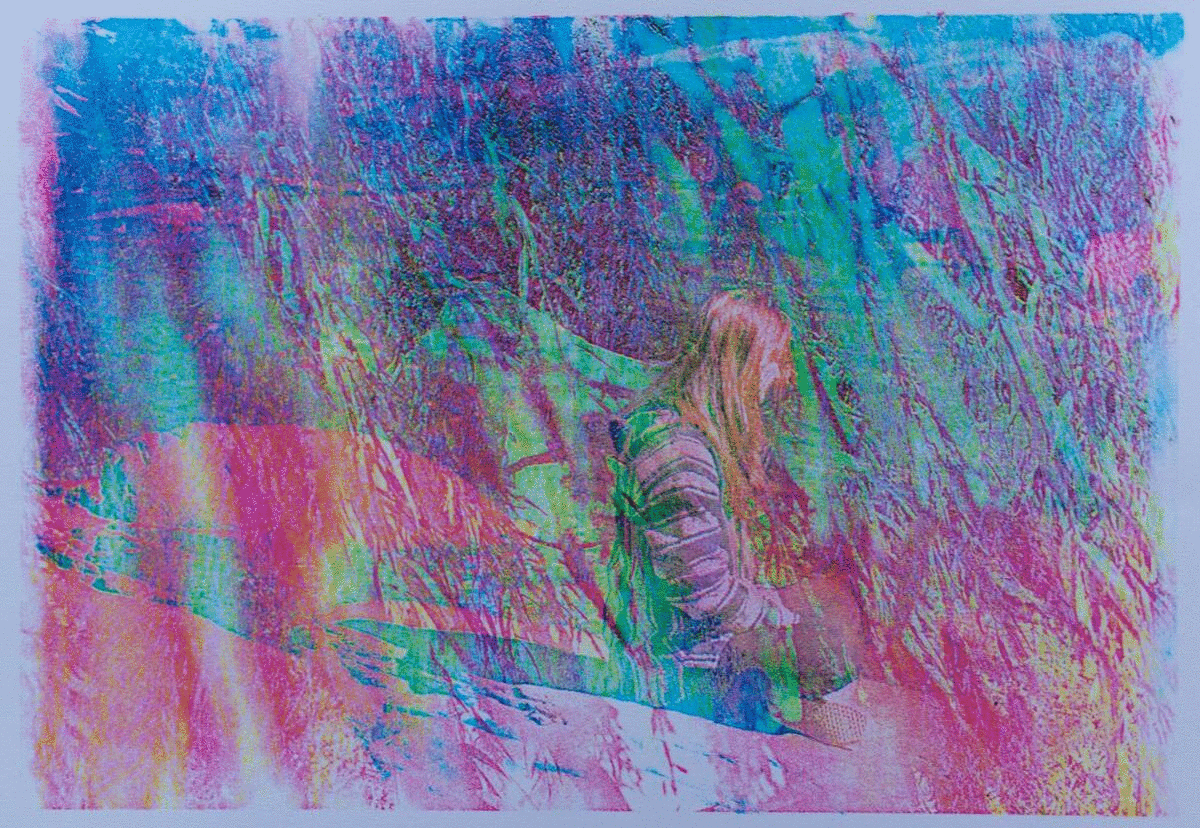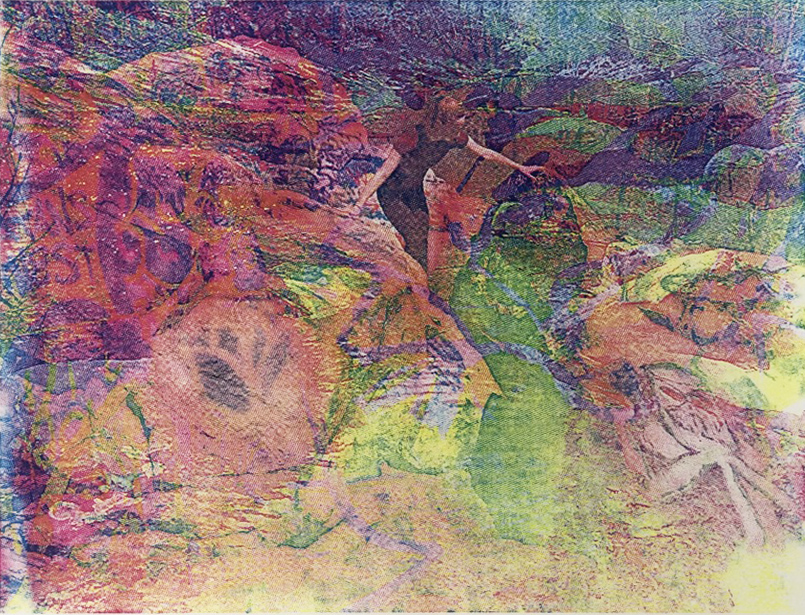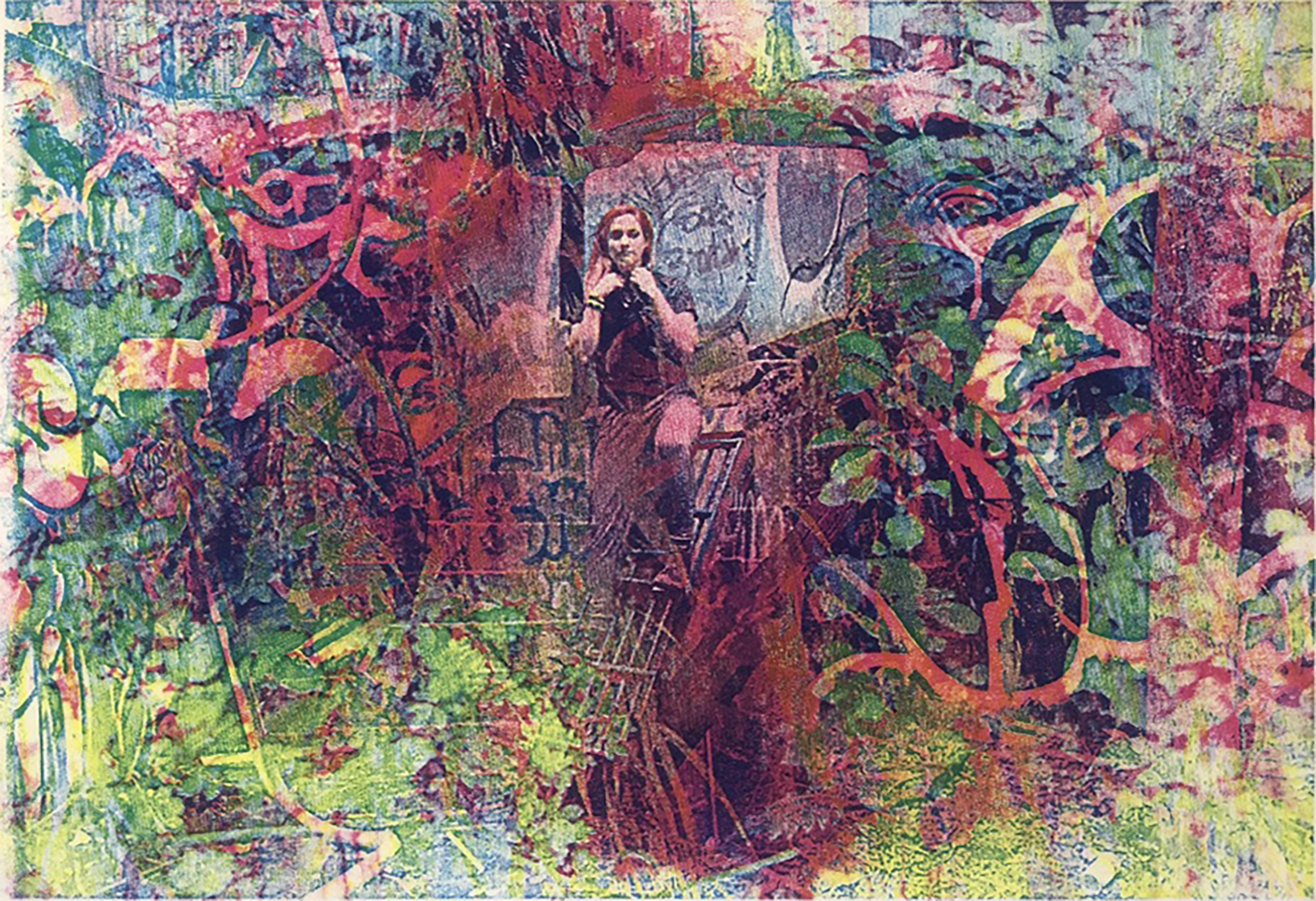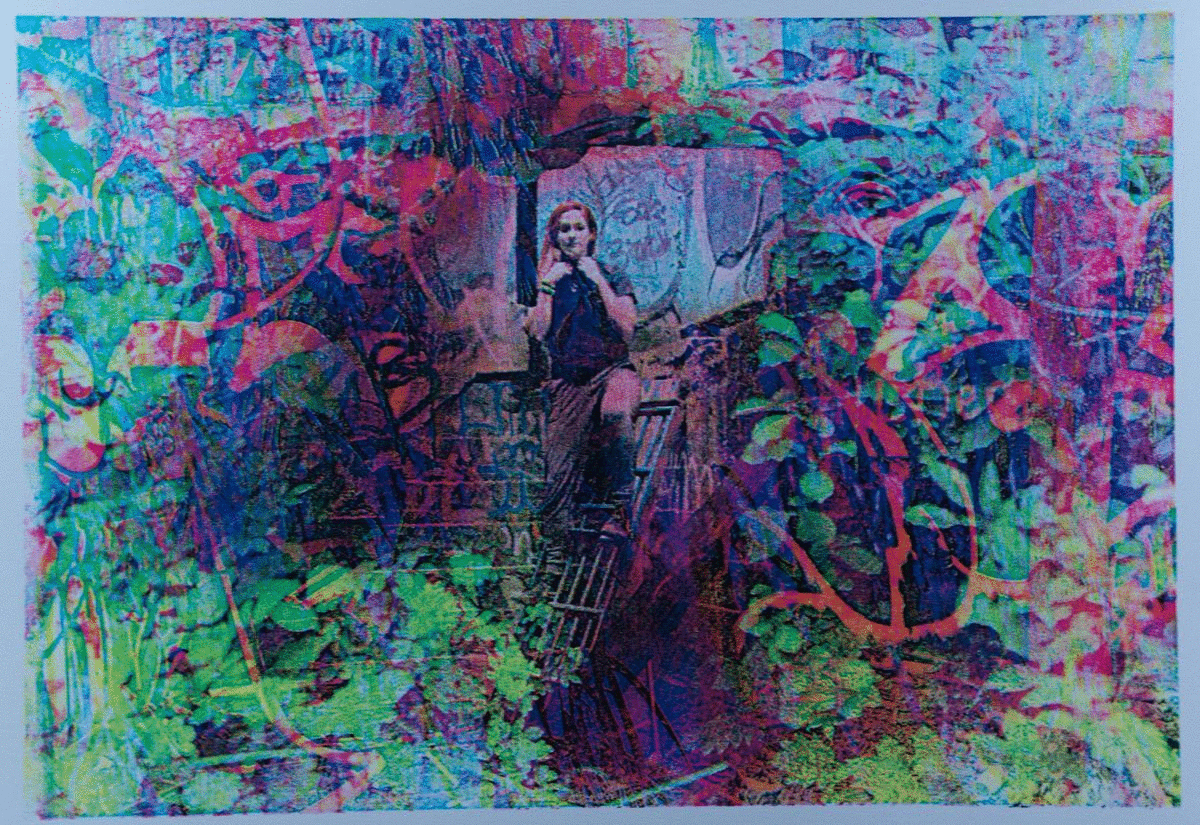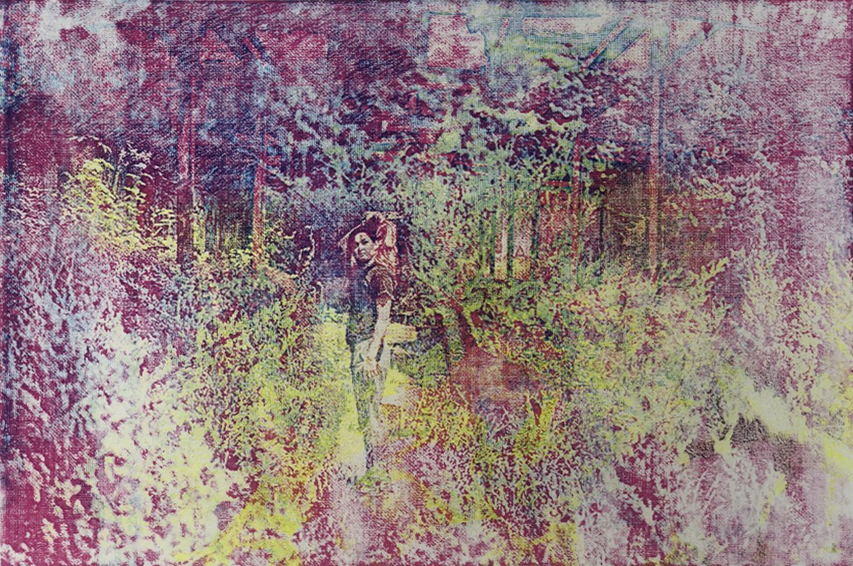Perception
Question Reality
Somatic, Screenprint, 8.5×11; Movement, Screenprint, 8.5×11; Inward, Screenprint, 8.5×11; Reflection, Screenprint, 8.5×11; Reflection in colored light; Descend, Screenprint, 8.5×11; Synchronous, Screenprint, 8.5×11; Synchronous in colored light; Salutary, Screenprint, 8.5×11
Artist’s Statement
Because we all have differing experiences, perception of reality is very different to each person thus creating personal realities and perceptions of the world. With my thesis, I created screen printed images that allow the viewer to use their personal experiences and understanding of reality to interpret the pieces. I used images of landscapes, trees, and figures layered on top of each other to create abstract and complex images. Each layer is a different color, either red, blue, or green. As the layers blend together and the colors mix, new colors, and shapes are formed. Due to the ambiguous nature of the images, the viewer must look within themselves and their minds to understand the image they see in front of them.
With these images I aimed to create impossible landscapes that seemed like the viewer could walk into, yet still had a level of confusion and abstraction that allows the viewer space to interpret the image. Similar to the works of Anna Barribell, who strives to demonstrate how the aesthetics of everyday life can be reimagined and transformed through the use of light and color, my work strives to challenge our understanding of time and space to change the way we view our reality. Once the viewer has begun to work through the image, red, green, and blue lights begin to flash to reveal each individual layer, providing clarity of the image. As the red light shines, the red layer of the images fades into the background, revealing the green layer. As the blue and green lights flash by, the same thing happens to both blue and green layers. The flashing of the lights represent our change of perception and discovery of the truth. Olafur Eliasson’s experiments with light and color have been a big inspiration for this work. With his work, he uses light and color to influence emotions and moods, which has inspired my use of light and color to create a change in reality. This unexpected and new way of viewing a flat image can change the viewers understanding of space, time, light, and color.
The use of screen print is another way in which I am able to influence the viewer’s understanding of reality. When viewed from a distance, the images seem almost photographic. However, upon closer observation, the images are made up of small colored dots overlapping and interacting with each other. By taking a digital image and printing it in an analog process, I am able to break down the boundary between digital and analog, while further breaking down the viewer’s expectation of photography documenting reality.
As personal perception of reality is not often thought about, my work causes the viewer to become aware of their perceptions and question the world around them. With the use of light, color, and abstraction, I am able to create moments of confusion and clarity. By questioning reality and looking within ourselves, we are able to find the truth, whether that be the truth of the image or the truth of the world around us.

